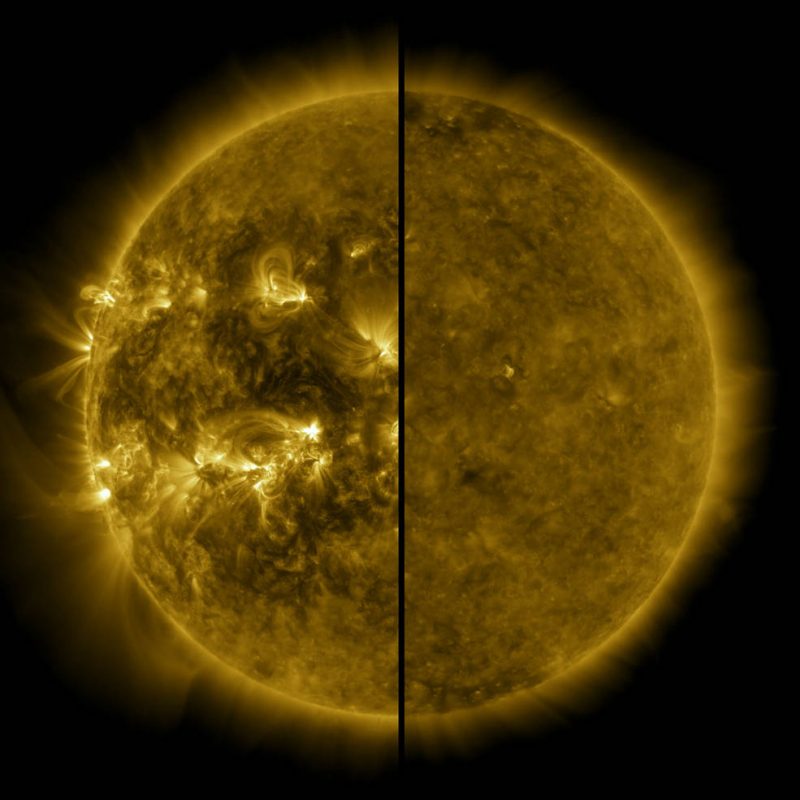
This split image shows the difference between an active sun during solar maximum (on the left, captured in April 2014) and a quiet sun during solar minimum (on the right, captured in December 2019). December 2019 marks the beginning of Solar Cycle 25, and the sun’s activity will once again ramp up until solar maximum, predicted for 2025. Image via NASA/ Solar Dynamics Observatory (SDO).
The 11-year sunspot cycle that just ended, Cycle 24, was a noticeably weak one. Around the peak of the cycle in April 2014, there were substantially fewer sunspots – and fewer accompanying solar flares and coronal mass ejections – than at other recent solar cycles. Expertshave predicted that Cycle 25, which was announced to have begun in September of this year, will be a weak sunspot cycle as well. But scientists led by the National Center for Atmospheric Research (NCAR) disagree. They announced on December 7, 2020, their prediction that Solar Cycle 25 will be one of the strongest on record. The article below, by Laura Snider, was originally published in NCAR & UCAR News. Reprinted here with permission.
In direct contradiction to the official forecast [from NOAA’s Space Weather Prediction Center, the U.S. government’s official source for space weather forecasts, watches, warnings, and alerts], a team of scientists led by the National Center for Atmospheric Research in Boulder, Colorado is predicting that the sunspot cycle that started this fall could be one of the strongest since record-keeping began [in 1755].
EarthSky lunar calendars are back in stock! We’re guaranteed to sell out – get one while you can.
In a new article published November 24, 2020, in the peer-reviewed journal Solar Physics, the research team predicts that Sunspot Cycle 25 will peak with a maximum sunspot number somewhere between approximately 210 and 260, which would put the new cycle in the company of the top few ever observed.









